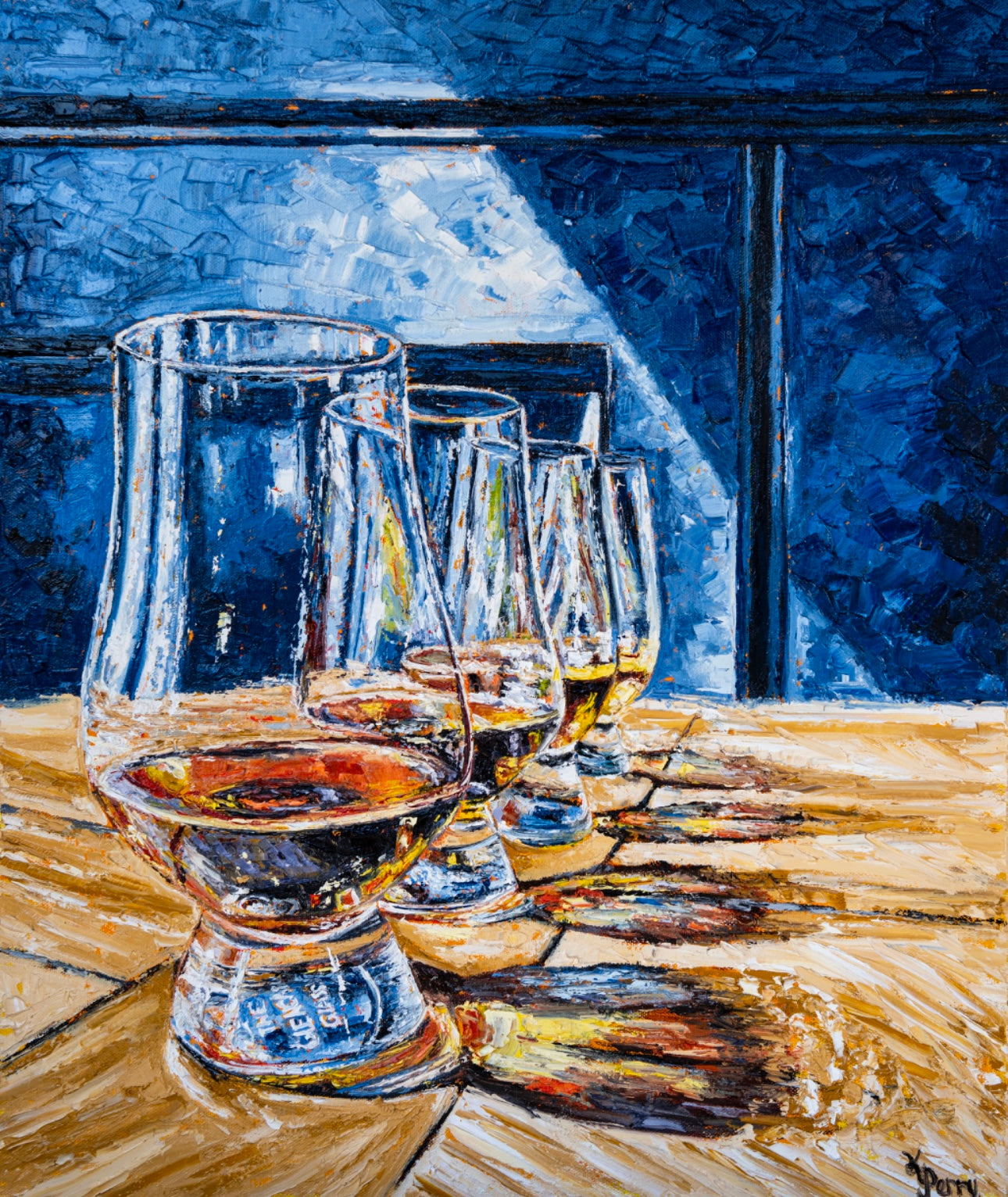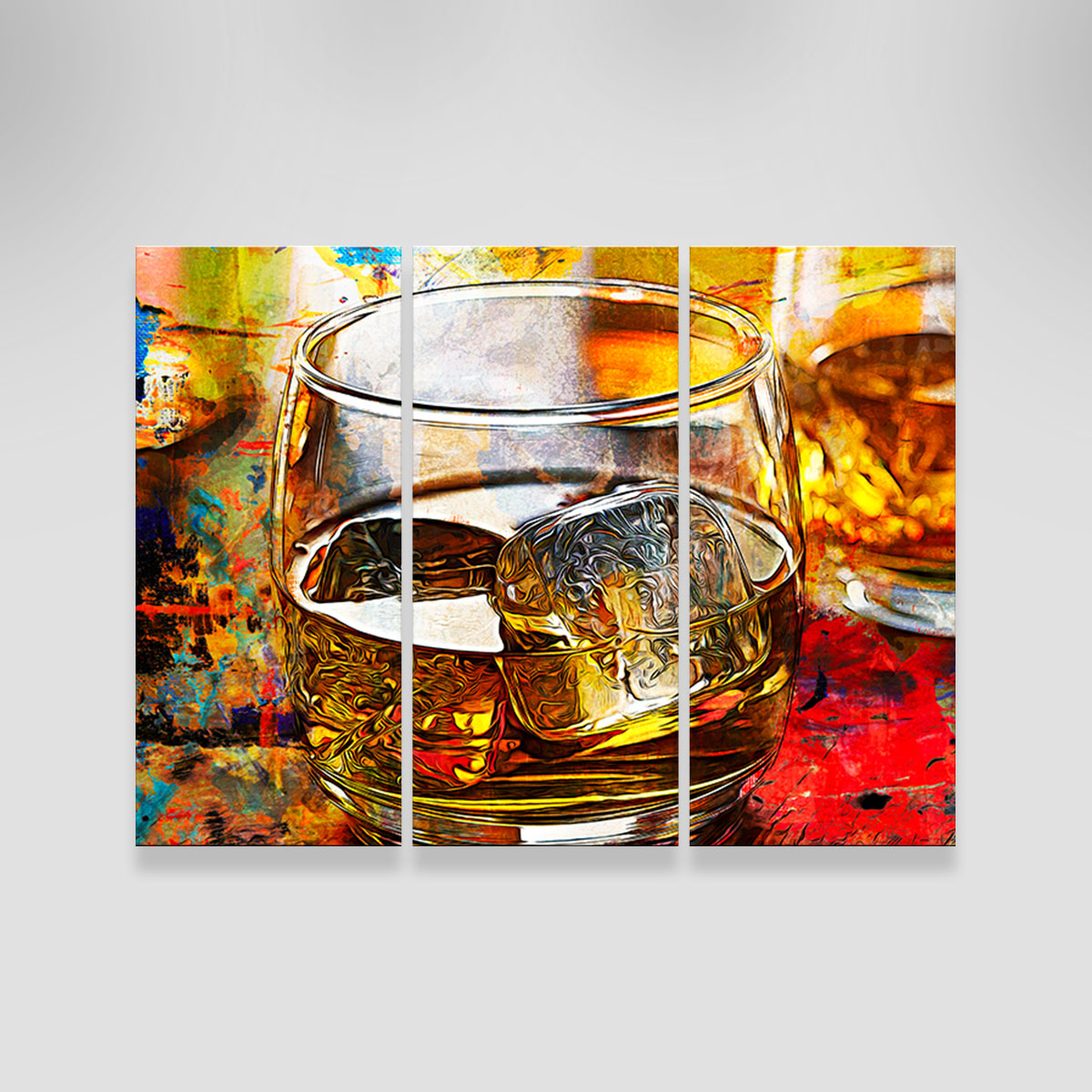Realism Art in the Whiskey Industry: Portraying Moments of Distillation
Realism Art in the Whiskey Industry: Portraying Moments of Distillation
Blog Article
The Importance of Whiskey Art in Celebrating Heritage and Workmanship in the Beverage Sector
The intricate connection between bourbon art and the event of heritage and workmanship within the beverage market can not be overstated. Through thoughtfully developed bottles and labels, bourbon brands encapsulate their historical roots and the artisanal skills that specify their production methods.
The Historical Roots of Whiskey
At the heart of scotch's attraction exists a rich tapestry of historical origins that map back to ancient people. The origins of bourbon can be linked to the distillation methods of the Sumerians and Babylonians around 2000 BCE, where early forms of fermented grain beverages began to emerge. However, it was in the Center Ages that the art of distillation progressed substantially, particularly in Ireland and Scotland, causing the creation of scotch as we recognize it today.
The term "whiskey" itself obtains from the Gaelic word "uisce beatha," implying "water of life." This expression emphasizes the social value of whiskey in Celtic societies, where it was typically connected with routines, celebrations, and communal bonding. By the 15th century, purification became an identified craft within monastic communities, leading the way for the facility of legal distilleries.
As trade paths broadened, bourbon's appeal expanded, going beyond local borders and recording the passion of connoisseurs worldwide. Whiskey Art. This historical trip mirrors not only the workmanship behind bourbon manufacturing but likewise its integral role in social and cultural contexts, noting it as a significant beverage throughout background
Artistic Expression in Branding
Whiskey branding stands as an engaging junction of creativity and business, where aesthetic identification plays a vital duty fit consumer assumption. The aesthetics of whiskey tags, packaging, and advertising products reflect not just the brand's story but also its core worths and heritage. With artistic expression, distilleries communicate a narrative that resonates with customers, stimulating feelings and triggering connections.
The usage of color, typography, and imagery in branding serves to distinguish items in a saturated market. Traditional themes may evoke a feeling of authenticity and workmanship, while modern-day styles can symbolize technology and forward-thinking. This critical creative direction boosts brand recognition and commitment, enabling consumers to build an individual partnership with the whiskey they pick.
In addition, imaginative expression in branding typically functions as a celebration of regional heritage. Distilleries regularly incorporate regional signs or historic recommendations right into their layouts, developing a sense of location that welcomes consumers to partake in a more comprehensive social experience. Ultimately, the artistry behind scotch branding not just improves visual allure however also enriches the total narrative of the brand, fostering a much deeper admiration for the workmanship and heritage embedded in each bottle.
Workmanship in Container Layout
The virtuosity evident in bourbon branding extends beyond visual identification to incorporate the craftsmanship entailed in container design. Each container functions as a vessel not simply for the spirit within, but additionally for the story it tells about its high quality, origin, and custom. The style procedure calls for precise attention to detail, as elements such as form, material, and closure add considerably to the total assumption of the scotch.
Workmanship in bottle design entails choosing high-grade glass that can improve the bourbon's shade and clarity, while additionally offering a tactile experience for the customer. The silhouette of the bottle must be both useful and aesthetically appealing, usually mirroring the heritage of the brand. Many distilleries choose for special shapes or embossed logo designs that evoke a feeling of credibility and background.
Additionally, the label style and typography play a vital function in connecting the brand's narrative. Limited Edition. A well-crafted bottle not only captivates the consumer's eye yet also enhances the brand name's commitment to quality and custom. By doing this, the workmanship of container layout comes to be a crucial facet of the bourbon experience, merging creativity with a profound regard for heritage
Cultural Relevance of Scotch Art
Celebrating practice and workmanship, the cultural significance of whiskey art transcends mere visual appeals, intertwining with the social and historic stories of the regions where it stems. Each you could try this out bottle serves as a canvas, depicting the distinct tales, mythology, and traditions that have formed neighborhood whiskey-making techniques. The intricate layouts often show the heritage of the distillers, incorporating icons and themes that resonate with the culture and values of their areas.

On top of that, bourbon art plays an essential duty in communal events and celebrations, functioning as a concrete link in between individuals and their shared experiences. By appreciating the virtuosity in scotch product packaging, customers grow a deeper understanding and respect for the craft, ultimately enriching their enjoyment of the drink itself.
Modern Trends in Scotch Presentation
In the last few years, the presentation of whiskey has developed to reflect modern preferences and fads while still honoring standard workmanship - Limited Edition. Distilleries are increasingly concentrating on visual components that enhance the overall drinking experience, linking the gap in between heritage and modernity
Innovative bottle styles have actually emerged, typically incorporating lasting products and artistic tags that tell engaging stories. Many brand names currently collaborate with regional artists, infusing their products with distinct aesthetic expressions that reverberate with consumers. Additionally, limited-edition releases are commonly packaged in collectible containers, adding value and appeal for lovers.

Final Thought
To conclude, scotch art acts as an important avenue for revealing the heritage and craftsmanship integral in the drink industry. Through complex branding, innovative container layouts, and culturally visite site substantial imaginative components, whiskey brand names properly recognize their practices and connect with consumers. This imaginative story not only elevates the appreciation of whiskey however likewise reinforces community identity and satisfaction amongst producers. Eventually, whiskey art plays an essential role go to my blog in preserving and celebrating the rich social tapestry of whiskey-making.


Workmanship in container design involves picking premium glass that can boost the whiskey's shade and clearness, while additionally giving a tactile experience for the consumer. In this method, the workmanship of container design becomes an important aspect of the whiskey experience, merging artistry with an extensive respect for heritage.
In conclusion, bourbon art serves as a vital avenue for sharing the heritage and workmanship fundamental in the beverage industry.
Report this page